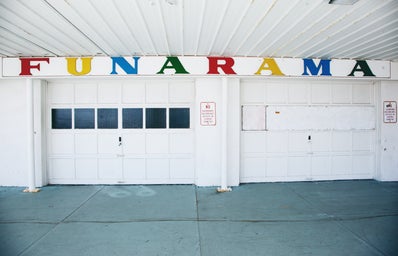For starters, I’ve always loved Snow White and Prince Charming since starting the show, but they set the example of what Once Upon a Time’s couples were going to look like from the beginning. All of the other major couples are also straight and white (and cisgender, god forbid they have a transgender character on the show at all, let alone part of a relationship). Being in these relationships “forever” are typically the show’s idea of ultimate happiness and my questions for that are why are happy endings only tied to romantic love and who are they for?
(Source)
I have a vague memory of this image being my homescreen on my iPad in like, 2013. I absolutely loved these two. Theirs was the first major story of the “modern” fairy tale adaptation. Snow White wasn’t just a helpless princess, she was a cool bandit that went around stealing from the Queen’s carriages. She didn’t need a man to survive, but suddenly Prince David, who she jokingly nicknames “Charming,” crashes into her life. Eventually, these two become the perfect symbol of True Love (TL) particularly after Snow takes a bite of the fatal apple and Charming wakes her with True Love’s Kiss (TLK).
To me, there’s nothing wrong with this couple on a basic level, even though they do have occasional problems. The problem is that they are essentially framed as the base of what true love should look like as if their identities and the boundaries of their relationship are the “perfect” way to be and the picture of the happiness you too can achieve. This wouldn’t be an issue if they were one of few straight white couples in a strictly monogamous relationship on the show.
Firstly, there’s the issue of the definition of a happy ending. Once Upon A Time’s idea of a happy ending seems to be finding the one person in all the worlds you are “meant” to be with and being with them forever. This could certainly be someone’s “happy ending,” but it is certainly not the key to happiness for everyone in real life, or at least it shouldn’t be the only thing considered.
Personally, I’m concerned for younger viewers watching this thinking heterosexual monogamy is their only chance at being happy when they grow up, especially when it’s framed as a “modern” fairy tale. Of course, it’s perfectly fine to want a relationship, marriage and kids, but it is in no way subverting any narrative involving fairy tales or happy endings. When I was thirteen and watching this show, I was more inclined to believe that achieving these things were the ultimate form of happiness.
It turns out, I wasn’t as straight as I thought. After a few years of watching the show, I began noticing not only what happiness means to the characters, but who was receiving this happiness. I had noticed that people wanted two of the main characters, Regina and Emma, to be in a relationship since season one. I didn’t know why at that time, but around season four I started noticing how it seemed like they cared about each other in a way that appeared more than friendly.
My point here is not whether these two should have been in a relationship, but that there was never a chance that they would be since they are two women. Because the show had created a solid idea of what happiness means, it excluded certain people from being happy. While the writers attempted to do redemption plots for “villains” in the show, this was based on their past actions that they are trying to do better by. Any sort of identity such as sexual orientation you hold to your core is not manageable; it is not something you choose to be. This can be overstated but still not fully understood. Why then, was there such little representation of LGBTQ people receiving a happy ending?
Frankly, the answer is because there were very few LGBTQ characters in canon. After years of ignoring fans of Swan Queen (Emma Swan plus Regina Mills, the Queen), the writers disappointed nearly everyone in season five when deciding to make Ruby (Little Red Riding Hood) and Dorothy (yes…the Wizard of Oz) a couple. Many LGBTQ audience members were upset because we took that as writers thinking any two female characters kissing will make us happy. Many straight mothers on Facebook were upset because they were convinced that their children seeing these characters together may damage their young minds.
The only other canonically queer character in seasons one through six (I’ll talk about season seven in another article) is Mulan. She clearly loved Aurora (Sleeping Beauty) but was not able to be with her, and a casual viewer may not have even picked up on that plotline or remember it. Besides the writers often ignoring nearly any of the three hundred plotlines of the show, it’s a pattern that the plots of characters of color tend to be sidelined. Mulan, for example, is the only main Asian character on the show. Even calling her a main character is a stretch since she mostly only shows up to accompany other characters on quests.
(Source)
Many other side characters that were also characters of color were often given little storyline or just had their plot and character arc ignored. Lancelot was presumably killed and replaced by a white woman (who had shape-shifted to look like him), Sidney Glass is only around when Regina needs to use him as the Magic Mirror and Rapunzel is in one episode to further the plot of a white main character.
Even when some of these characters are given happiness or some sort of conclusion, it isn’t a grand storyline in a major part of the show. Most of the time they are being used as a plot device by the white characters, or even used solely for their character development.
If you take nothing else away from this article, I hope that it would be to start paying attention to how certain characters are treated on your favorite shows. Are the writers using old tropes to reinforce homophobic and racist ideas without even knowing it? Are queer characters and characters of color being pushed to the side to develop complexities of only their straight white counterparts? Lastly, what sort of message is the show sending when creating a pattern of who is allowed to be happy, especially when it is geared towards young adults? There is nothing wrong with continuing to love Once Upon A Time, but I urge you to bring a critical eye to the seven-season fairy tale drama.



